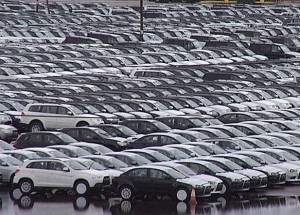Vehicle logistics: Why the only certainty is uncertainty
Constantly shifting political, industrial and logistical currents will ensure change remains the only constant in vehicle logistics
 Finished vehicle logistics, perhaps more than other supply chain disciplines, is focused on operations at hand and responding flexibly to changes rather than speculating about future trends. While 2017 could be a year of political disruption, making guesses over changes to Nafta or EU trade just won’t do – companies need hard facts on which to base investments and deploy assets.
Finished vehicle logistics, perhaps more than other supply chain disciplines, is focused on operations at hand and responding flexibly to changes rather than speculating about future trends. While 2017 could be a year of political disruption, making guesses over changes to Nafta or EU trade just won’t do – companies need hard facts on which to base investments and deploy assets.
Even before political developments, there is plenty to get on with. For example, though less predictable than ever, the US market appears to be near the peak of a sales cycle that goes back to 2009, and carmakers and logistics providers will need to adjust. At American Honda, for example, head of logistics Chuck Kendig admits logistics costs have risen above inflation in recent years, and he wants to arrest that trend. In the UK, falls in the value of the pound are putting pressure on costs, with OEMs looking to the supply chain for savings. There are similar pressures elsewhere, whether in regulatory changes in China or India, or the need to capture export flows to make the most of under-used capacity in South America.
The good news is that most executives agree the answer to improving operations lies more in improving productivity and efficiency than putting the squeeze on providers. Kendig, for example, wants to use the network more intelligently, whether in finding backhauls or adjusting modes that might work better for both Honda and providers.
Similarly, in India, there is recognition that in adapting to new equipment with lower load factors, truckers can’t be expected to make up the difference in costs. OEMs have agreed to rate rises and the focus will now be on improving network flows. PR Ramakrishnan, head of supply chain management for Honda Cars India, points out that car carriers were under-utilised to begin with, and now is an opportunity to make better use of available capacity.
In North America, even a dip in sales needn’t stop all investment, either. Carriers surveyed in the US are still expecting to refresh and expand fleets. Meanwhile, carmakers such as Volkswagen and Honda are increasingly focused on transport visibility and the estimated delivery dates they provide to retailers and customers. Dealers, after all, use Amazon or Uber enough to want similarly dynamic information about the progress of their vehicle orders.
If there is one certainty for 2017, it is that uncertainty will reign. That’s all the more reason for OEMs and providers to work together to make sense of it all.





